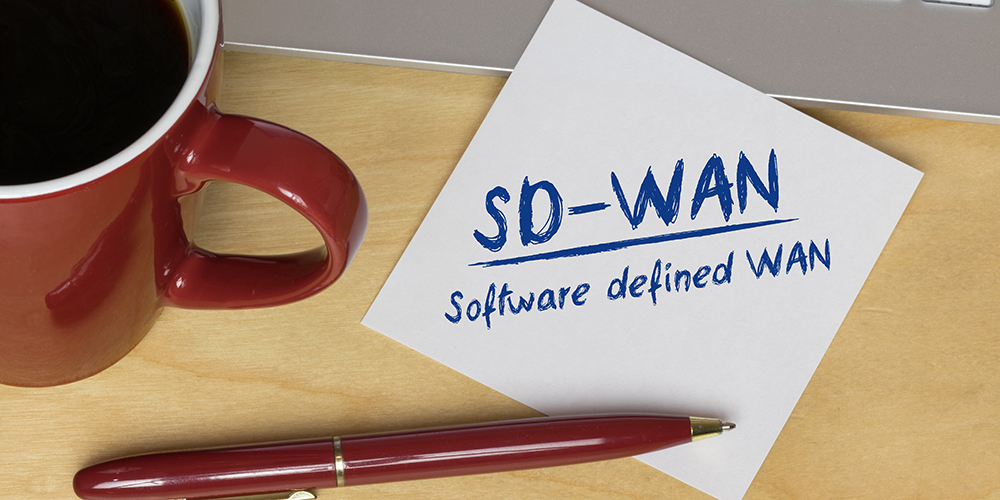
Jul 16, 2024 | SMB Technology, SMB Technology, SMB Technology, SMB Technology, Technology News
In 2020, the way people worked changed, likely for good. Instead of being in the office most of the time, employees worked at home. Although some workers have come back to the office, hybrid work is here to stay. Secure Access Service Edge (SASE), pronounced “sassy”) is ideal for hybrid work, with its cloud-native architecture, centralized access policies and support of access based on device identity. Read on to learn more about this architecture and what it can bring to hybrid offices. Benefits of SASE for Hybrid Work The cloud-native architecture of Secure Address Service Edge can combine the flexibility and scalability of cloud with the connectivity of Software-Defined Wide Area Networks (SD-WAN). Add to this centralized access policies based on user device identity. Data does not need to travel from one source to the data center, and back again–lessening the chances of it being lost or intercepted in transit. Access is verified at specific endpoints when a user logs in, and data can travel along SD-WAN pathways to these endpoints, once verification occurs. SASE can address the needs of hybrid offices for security and connectivity. Key components of SASE include: Secure Web Gateway: a cloud-based proxy that enforces standards for communication applications like Microsoft Teams, which are frequently used by hybrid offices. Firewall as a Service (FWaaS): Cloud-based firewall that provides a standard security experience and eliminates the need for an on-premises firewall. Cloud-Access Security Broker: Extends rules and policies to software and infrastructure not owned by your company. Zero-Trust Network Access (ZTNA): Anytime a user or device (such as a...

Apr 8, 2024 | SMB Technology, SMB Technology, SMB Technology, SMB Technology, Technology News
n the last several years, remote and hybrid work environments have become common. Many offices have at least a partially remote workforce, and this calls for communications applications that are always on and helping workers to collaborate effectively. To learn about leveraging software-defined wide area networks for seamless communication, read on. What SD-WAN and Why it Matters With remote and hybrid work more common, and teams using popular platforms, seamless Internet connectivity, stability and reliability are essential. Software-defined wide area networking, or SD-WAN, is a cloud-based approach to WAN management that brings together multiple providers to offer the connectivity needed. The infrastructure is in the cloud, eliminating the need for customers to manage and maintain their own. All they need is an internet connection and an appliance at each connection point (remote office). Additional appliances can be added as needed. SD-WAN uses multiple transports including business-class broadband and networking as well as MPLS already used in WANs, to route traffic effectively for a hybrid workforce. Software-Defined Wide Area Network offers numerous benefits. First, it reduces capital expense by eliminating the need for companies to maintain on-premise infrastructure. Operational expense is decreased by reducing the need for IT professionals to make trips out to fix problems. Instead, monitoring and troubleshooting is centralized. Like the cloud in general. SD-WAN is scalable, with devices easily added to the network. And by using multiple providers, data is moved reliably to where it’s needed as a result of increased bandwidth. Security Considerations in SD-WAN Readers might be wondering about security. How can so much data in transit be protected?...

Nov 9, 2023 | SMB Technology, SMB Technology, SMB Technology, SMB Technology, Technology News
The old defenses against cyberattacks–firewalls, antivirus programs and operating system patches–worked well when the security perimeter was the office. Now that remote work is here to stay and more devices are connected to company networks, protecting networks is more complicated. Read on to learn how defense in depth, an integration of individual tools, can help you better protect your technological assets. The Significance of Defense in Depth With business operations having altered in the last several years, more endpoints are connected to networks, and the threat surface expands. Not every remote worker may have the most up-to-date antivirus protection, for example. Bad actors could use brute-force attacks, seeking entry into numerous parts of the network. With defense in depth, other controls would keep the criminals from getting very far. This redundancy can give administrators time to enact countermeasures to keep the intruder from penetrating the network deeply Typically, defense in depth involves three layers of controls–administrative, physical and technical. Administrative controls have to do with the policies and procedures that workers follow; for example, restricting permission to certain portions of the network, and allowing access to the data and applications they need to do their work (least privilege). Another layer involves physical security, and protects data centers and IT systems from threats like data theft. These controls include guards, security cameras and biometrics and/or ID cards. The layers of controls are working at different layers yet are integrated to provide a strong defense against cyberattack. Getting Started with Defense in Depth But where to start? CompTIA’s article on the topic makes several suggestions. One is to...

Sep 7, 2021 | SMB Technology, SMB Technology, SMB Technology, SMB Technology, Technology News
More than ever, your employees are working outside the office; this trend is expected to continue. Therefore your company needs the flexibility, reliability and security of a virtual connection. Read on to learn about Desktop as a Service (DaaS) and how it can help you keep your business running smoothly. Make Desktop as a Service (DaaS) Work for You Desktop as a Service (DaaS), with its flexibility, reliability and security, is invaluable for businesses with remote workers. Workers can access systems, data and applications via the cloud, with just an Internet connection and a web browser. The service provider furnishes the infrastructure, network resources and storage in the cloud, and users’ computers are connected to the virtual desktop, and can access data and applications. Rapid deployment means that a new device can be connected to the virtual desktop, and later disconnected if needed; this will help businesses cope with fluctuating demand at different times of the day or year. If demand on one server is too great, all machines can be migrated to a different server. Remote IT support can be given by the service provider, preventing downtime and keeping your systems running. Desktop as a Service is Affordable and Secure Desktop as a Service can be affordable by managing consumption during peak business hours and the cloud subscription model allows companies to pay just for the resources they use. Service providers can help manage consumption by reducing available resources during off-peak hours. When it comes to security, IT service providers can quickly create a new desktop in case of a ransomware attack, so that data and...

Aug 16, 2021 | SMB Technology, SMB Technology, SMB Technology, SMB Technology, Technology News
Many companies realized the benefit of remote employees working from home. With companies competing to be the employer of choice, ability to work remotely has become a benefit many job hunters are looking for. With remote work becoming even more popular, technologies like cloud, software-defined wide-area networking (SD-WAN) and more have helped to provide a fast, secure and connected work environment. Read on to learn more about how cloud-based technologies support the remote-work experience Take Advantage of the Cloud Since it’s unlikely for remote workers to have IT infrastructure at home, the cloud supports remote access to a company’s applications and data. With just an Internet connection and a web browser needed to access a virtual desktop, remote workers can easily communicate, collaborate and complete tasks. Data and applications reside within the cloud, accessible to workers in their home offices. Better yet, SD-WAN can help keep traffic moving and business running smoothly. Keep Things Moving with SD-WAN A software-defined wide-area network, or SD-WAN, keeps bandwidth moving in order to give workers and customers a seamless and enjoyable user experience. Based on criteria that are set up ahead of time, SD-WAN can direct traffic in the most efficient way; if one route is bottlenecked or down for some reason, traffic gets redirected efficiently and your employees remain productive. Unlike traditional wide area networking, SD-WAN provides users a direct route to cloud resources. Not only is SD-WAN fast, it is secure even with transmission of great amounts of data. With such robust technology, workers can communicate and collaborate even more effectively. Collaborate Using Unified Communications ...






